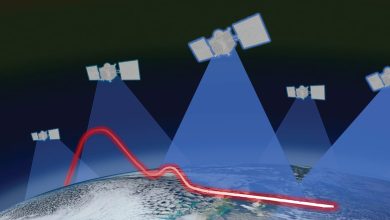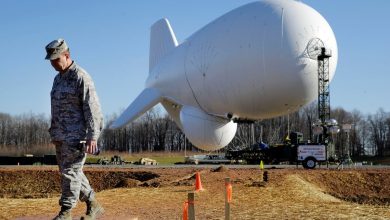Anduril to open software-based manufacturing hub to scale production

As the Pentagon makes a push toward scaling production of autonomous systems and weapons, Anduril Industries is accelerating its own manufacturing capabilities through a new software-based production hub called Arsenal.
The California-based defense technology company announced Wednesday it will build the first Arsenal facility in the U.S., using funding from a recent $1.5 billion Series F investment round. Chris Brose, Anduril’s chief strategy officer, told reporters the firm’s goal is to consolidate manufacturing in order to “hyperscale” production across its product lines, including uncrewed combat drones and autonomous underwater vehicles.
“When we say hyperscale, we mean the ability to produce tens of thousands of a given system,” he said in a briefing. “This is the target that we’re setting for ourselves right now.”
The company hasn’t identified a location for the first Arsenal facility, but it will join the company’s growing footprint of manufacturing hubs spread across the United States. Brose noted that the firm wants to quickly replicate Arsenal’s capabilities in other regions and may consider basing plants overseas, in proximity to key U.S. partners.
Underlying Anduril’s development of Arsenal, and of much of Anduril’s approach to defense innovation, is the belief that the U.S. and its allies aren’t producing enough of the weapons and vehicles they need to counter threats from major adversaries. Russia’s war in Ukraine has highlighted this challenge, as the U.S. has struggled to replenish its munitions stocks after supplying weapons to Kiev.
That problem, according to Brose, will only grow in a future conflict with China.
Anduril’s announcement comes as the Pentagon works to scale production of key defense systems, including munitions and unmanned aircraft, vessels and land vehicles.
The Defense Department’s Replicator effort — which aims to field thousands of low-cost drones by next summer — is perhaps the most high-profile of these programs, but there are other examples within the services, including the Air Force’s Collaborative Combat Aircraft effort, or CCA.
Anduril is involved in several of these efforts in the U.S. and abroad. The firm is one of two vendors building aircraft for the first increment of CCA and is reportedly providing counter-drone technology for Replicator through a system called Wide-Area Infrared System for Persistent Surveillance. This spring, the company announced a partnership with Australia’s Defence Force to co-develop the Ghost Shark extra-large autonomous underwater vehicle.
Brose said what differentiates Arsenal from other manufacturing approaches is its software backbone, powered by the company’s Lattice autonomy platform. The system uses common resource planning and execution systems that allow it to integrate threat simulations, testing, data management and other functions.
“This is very different than how traditional defense production is, where software is broken up across lots of different subcomponents and Balkanized across the platform,” he said. “What Lattice gives us is the ability to start with a mature software platform, and then build modular producible weapons from it, where we can control how all of the different subsystems interface into the overall platform.”
Arsenal will also rely heavily on commercial industry, leveraging dual-use technology and components wherever possible. This approach is already a big part of Anduril’s philosophy, as about 90% of its products use commercially available components and materials to reduce timelines and save on production costs.
The intent, Brose said, is to draw lessons — and in some cases personnel — from successful commercial leaders in the automotive or consumer electronic industries.
“We’re taking many of the people who lead those processes at some of these world-leading commercial companies that have achieved this type of hyperscale production before and we’re bringing this into the defense industrial base to fundamentally transform how we build weapons, how we design weapons,” he said.
Courtney Albon is C4ISRNET’s space and emerging technology reporter. She has covered the U.S. military since 2012, with a focus on the Air Force and Space Force. She has reported on some of the Defense Department’s most significant acquisition, budget and policy challenges.







